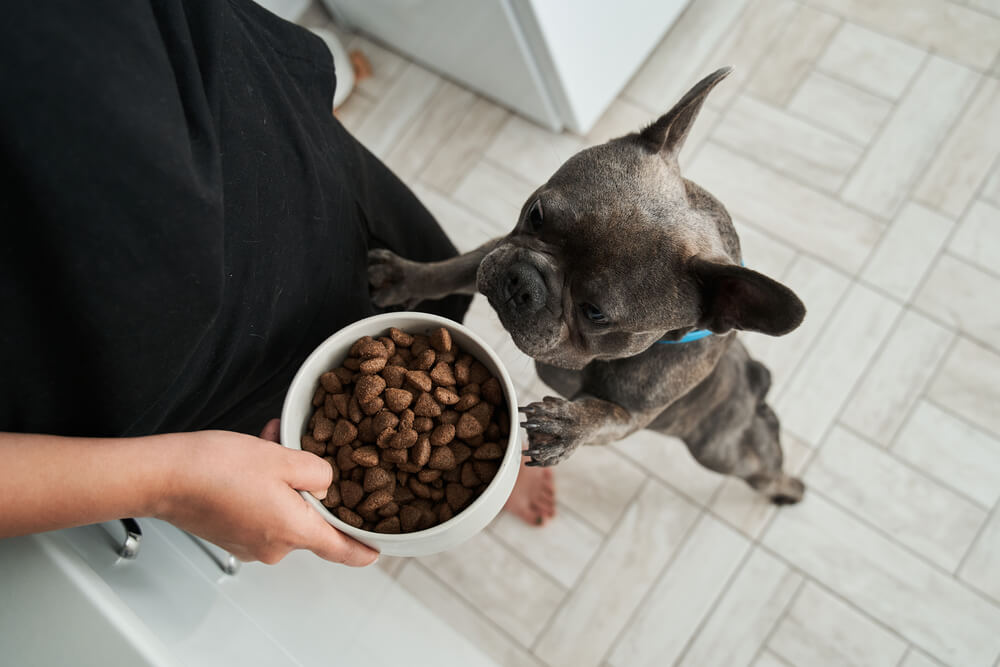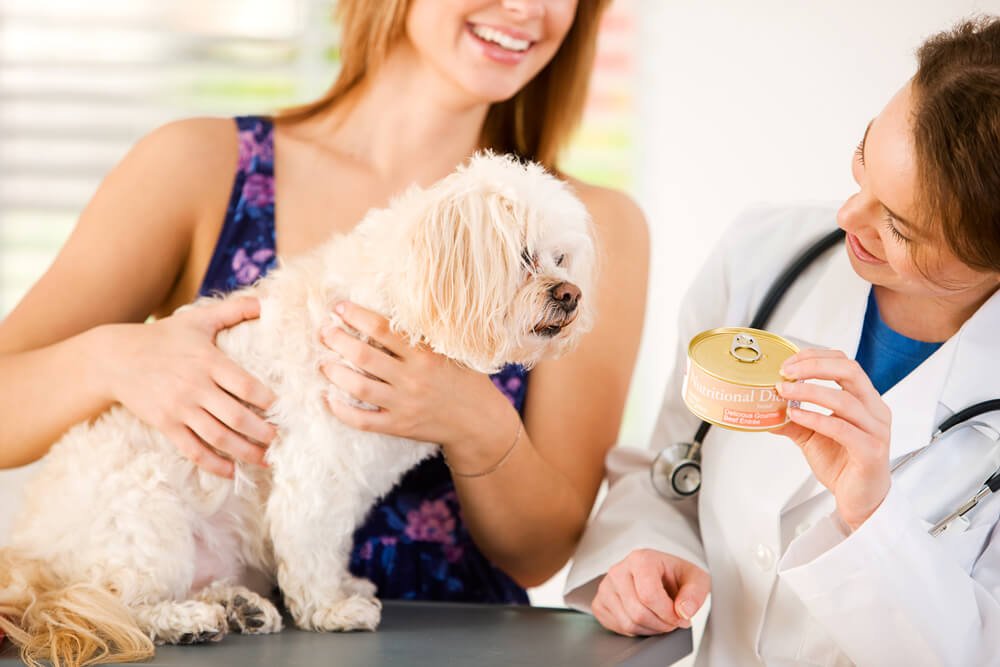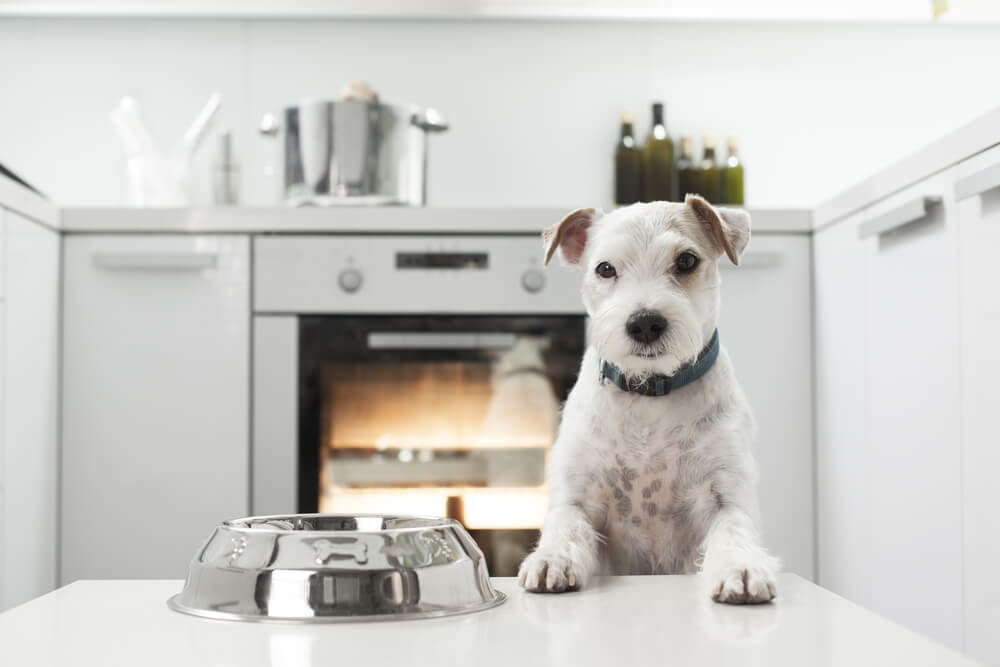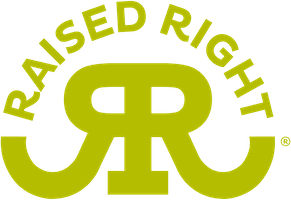
Is gently cooked dog food the same as lightly cooked dog food?
Some companies use the term gently cooked dog food, whereas other companies use the term lightly cooked dog food. In short, they mean the same thing as the lightly cooking / gently cooking method means that the food is cooked to the minimum temperatures required by the USDA to kill pathogens like E. coli, listeria, and salmonella. For beef, pork, and lamb this temperature is 145 F. For poultry like chicken and turkey this temperature is 165 F. To avoid being redundant, we’ll refer to this type of food as gently cooked dog food throughout this article.
Is gently cooked dog food fully cooked?
Since gently cooked dog food is cooked to the minimum temperatures required to kill pathogens, it means that the food is fully cooked. The primary reason it’s called gently cooked is because the food is cooked to the minimum temperatures required to kill pathogens instead of cooking to high temperatures like canned food and kibble. The retorting method in which canned food is cooked typically reaches temperatures as high as 279 F and kibble reaches even higher temperatures during the production process as kibble is typically extruded at 350 F.
Many nutrients get degraded by the extreme temperatures used to make kibble and canned food. The primary benefit of the gently cooking method is that it helps to retain the nutritional integrity and higher moisture levels of the food. For this reason, many people are seeking gently cooked dog food instead of kibble and canned food. These people are often concerned that kibble and canned food may not be nutritious enough for their dog, due to the way these foods are prepared with the high temperatures they’re cooked at. Here’s an overview of how kibble and canned food are commonly produced:
How is kibble commonly produced?

The process to make kibble is called “extrusion” and it involves blending ingredients to form a dough first and then extruding it at 350 F.
“Extrusion” is a very common way to prepare commercial dog kibble. The process involves blending ingredients to form a dough, which is then heated under pressure before being forced through a machine that cuts it into pieces. The process varies slightly between brand to brand, but kibble is typically extruded at 350 F.
How is canned food commonly produced?

Many nutrients get degraded by the extreme temperatures used to make kibble and canned food.
The ingredients are blended and sealed in cans, which are then cooking through the retorting process. The process involves hermetically sealing the food in a container, often a tin canister or glass jar, and then pressure cooking the food inside of the container. As we mentioned earlier, the retorting process reaches temperatures as high as 279 F.
How is gently cooked dog food commonly produced?
Within the gently cooked category, it seems like there are 3 primary ways companies are cooking their food. Some companies cook in stand up ovens, whereas some use kettle cookers, and others use the sous vide method. Cooking in stand up ovens and kettle cookers are the preferred methods as there is some concern about the sous vide method due to the risk of plastic leaching into the food during the cooking process because the food is cooked inside of a plastic bag in a hot water bath during the sous vide method. If you’re not sure what method the company is using to gently cook their food, please make sure to ask them.
How do I select the best type of gently cooked dog food?

Your dog needs to be eating a complete and balanced dog food so make sure you look for an AAFCO statement on the food label.
It’s important to make sure the gently cooked dog food you’re feeding meets AAFCO’s standards for a complete & balanced diet. To know if a company meets AAFCO’s standards, check to see if there is an AAFCO statement on the food label. When you’re reading the label, make sure to check the ingredient list and the guaranteed analysis when comparing different gently cooked dog foods.
If the ingredient lists contains high carb fillers, preservatives, or a long list of synthetic vitamins & minerals you should look for another option. A key identifier when looking for a high quality gently cooked dog food is to compare the protein percentage between brands as foods that are higher in protein are usually lower in carbs because they contain less high carb fillers like potato, rice, oats, yam, squash, barley, or pasta.
Another thing to look for is companies who can make the human-grade dog food claim as this means the food is gently cooked in a USDA inspected human-grade facility. Some companies take food safety a step further by lab safety testing each batch for pathogens like E.coli, listeria, and salmonella. Transparent companies will post the test results on their website for everyone to see.
FAQ
What does gently cooked dog food mean?
Gently cooked dog food, also known as lightly cooked dog food, refers to dog foods that have been cooked to the minimum temperatures required by the United States Department of Agriculture to kill pathogens like E.coli, listeria, and salmonella.
Is gently cooked dog food good for dogs?
A research study found that gently cooked dog food has higher digestibility than kibble. This can potentially lead to many benefits such as stronger immunity, better weight control, cleaner teeth, higher energy levels, increased mobility, and so on.
Is it okay to cook raw dog food?
It’s not recommend to cook raw dog food because raw dog foods were formulated to be complete & balanced in the raw state so they didn’t account for the cooking process when they were formulating their recipes.



